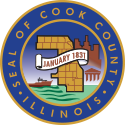Ozone Season is Here: Be Prepared
Ozone at ground level is a harmful air pollutant because of its effects on people and the environment, according to the U.S. Environmental Protection Agency. It is the main ingredient in “smog." Ground level or "bad" ozone is created by chemical reactions between oxides of nitrogen (NOx) and volatile organic compounds (VOC) in the presence of sunlight. Emissions from industrial facilities such as refineries and chemical plants, electric utilities, motor vehicle exhaust, gasoline vapors and chemical solvents are some of the major sources of NOx and VOC. Breathing ozone can trigger a variety of health problems, particularly for children, the elderly and people who have lung diseases such as asthma. Ground level ozone can also have harmful effects on sensitive vegetation and ecosystems.
What are the health effects of ozone?
Ozone in the air we breathe can harm our health. People most at risk from breathing air containing ozone include people with asthma, children, older adults and people who are active outdoors, especially outdoor workers. In addition, people with certain genetic characteristics, and people with reduced intake of certain nutrients, such as vitamins C and E, are at greater risk from ozone exposure.
Breathing ozone can trigger a variety of health problems including chest pain, coughing, throat irritation and airway inflammation. It also can reduce lung function and harm lung tissue. Ozone can worsen bronchitis, emphysema and asthma, leading to increased medical care. Learn more about health effects of ozone.
What is Cook County’s role in measuring ozone and other pollutants?
The Department operates an air-monitoring network for sulfur dioxide, nitrous oxides, ozone, metals, and particulates (smaller than 2.5 micron in diameter), as part of the U.S. E.P.A national air monitoring network. This network includes 8 continuous sites, 8 non-continuous sites and one special project air toxic monitoring site. These sites are located throughout Cook County, including in the City of Chicago.
Continuous site data is pulled every hour and stored at the Department’s computer in Maywood. Daily average readings can be accessed by the public through recorded messages, which are translated to an Air Quality Index (AQI). The AQI is an index for reporting daily air quality. It tells you how clean or polluted your air is, and what associated health effects might be a concern for you.
You can learn more about the AQI here. The Air Now website also gives you tips to avoid health effects from ozone pollution, such as reducing heavy or prolonged outdoor exertion, or scheduling activities in the morning when ozone levels are lower.
What are the ozone levels in my community?
Ozone is most likely to reach unhealthy levels on hot sunny days in urban environments, but can still reach high levels during colder months. Ozone can also be transported long distances by wind, so even rural areas can experience high ozone levels. Projected weather patterns for the summer of 2016 may mean higher ozone levels for the Cook County area.
Air quality forecasts are often given with weather forecasts on handheld devices, online or in the paper or television. You can check ozone levels and other daily air quality information by visiting www.airnow.gov and in many areas you can receive air quality notifications through www.enviroflash.info.
What can I do to fight ozone pollution?
Partners for Clean Air, an Illinois coalition dedicated to improving air quality through voluntary actions, has tips for communities, employers, residents and schools. Those topics include how to promote alternatives to automobiles such as public transit and ride-sharing. Find out more at http://www.cleantheair.org/.
For More Information:
Learn more about ozone pollution from the U.S. Environmental Protection Agency here. To receive tweets from the Cook County Board President, including notifications of Ozone Action Days, follow @Cookenviro and @ToniPreckwinkle on Twitter.
